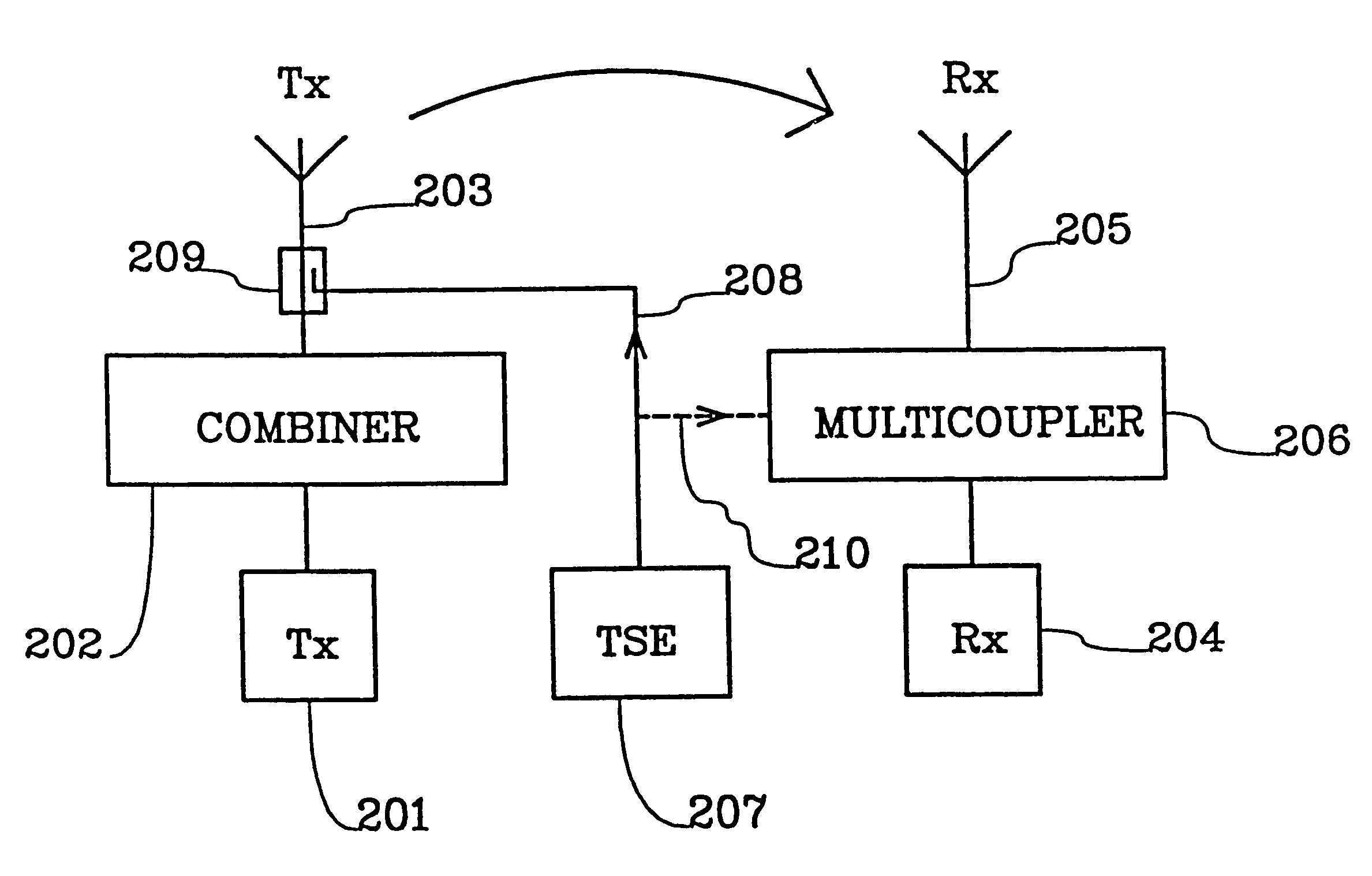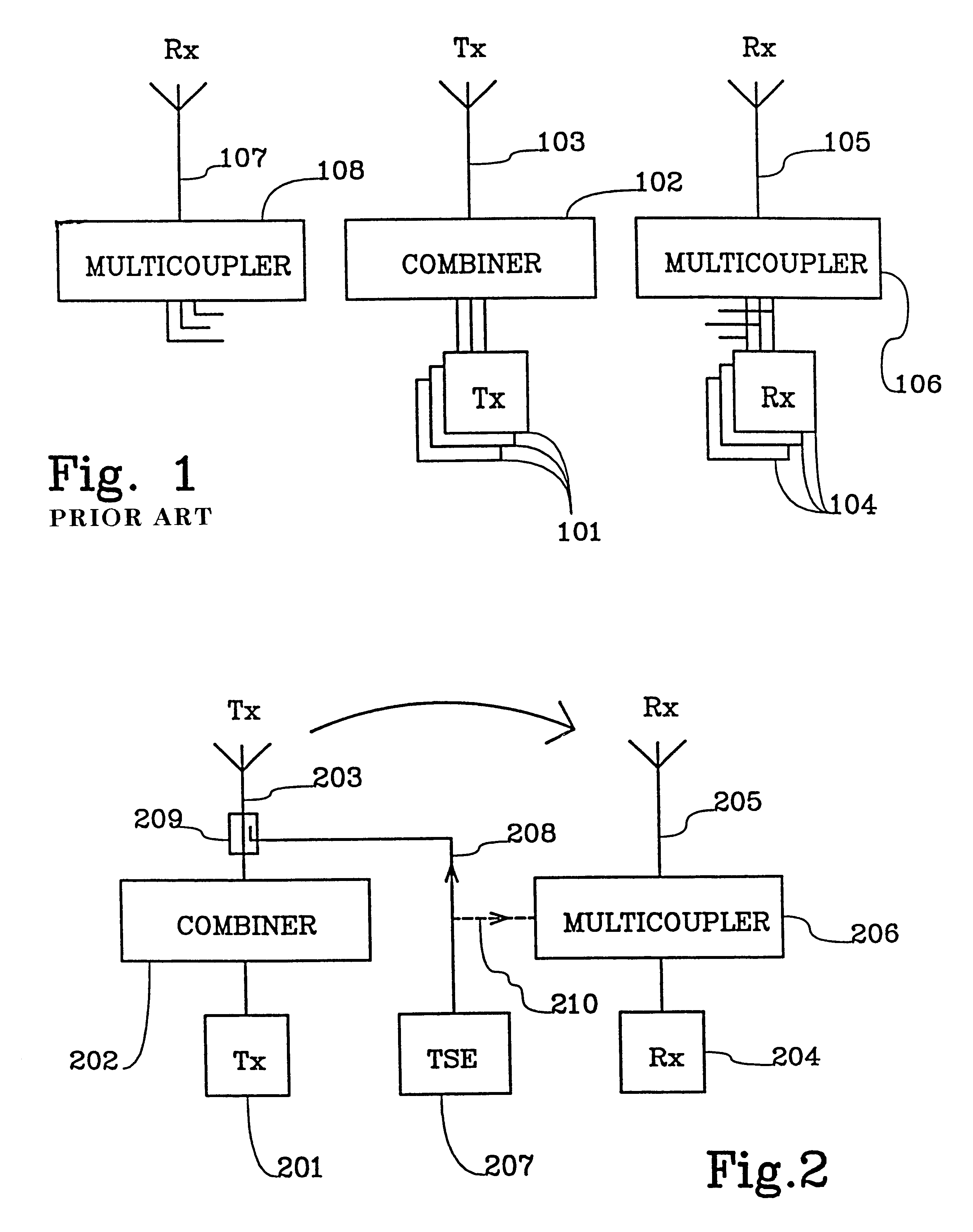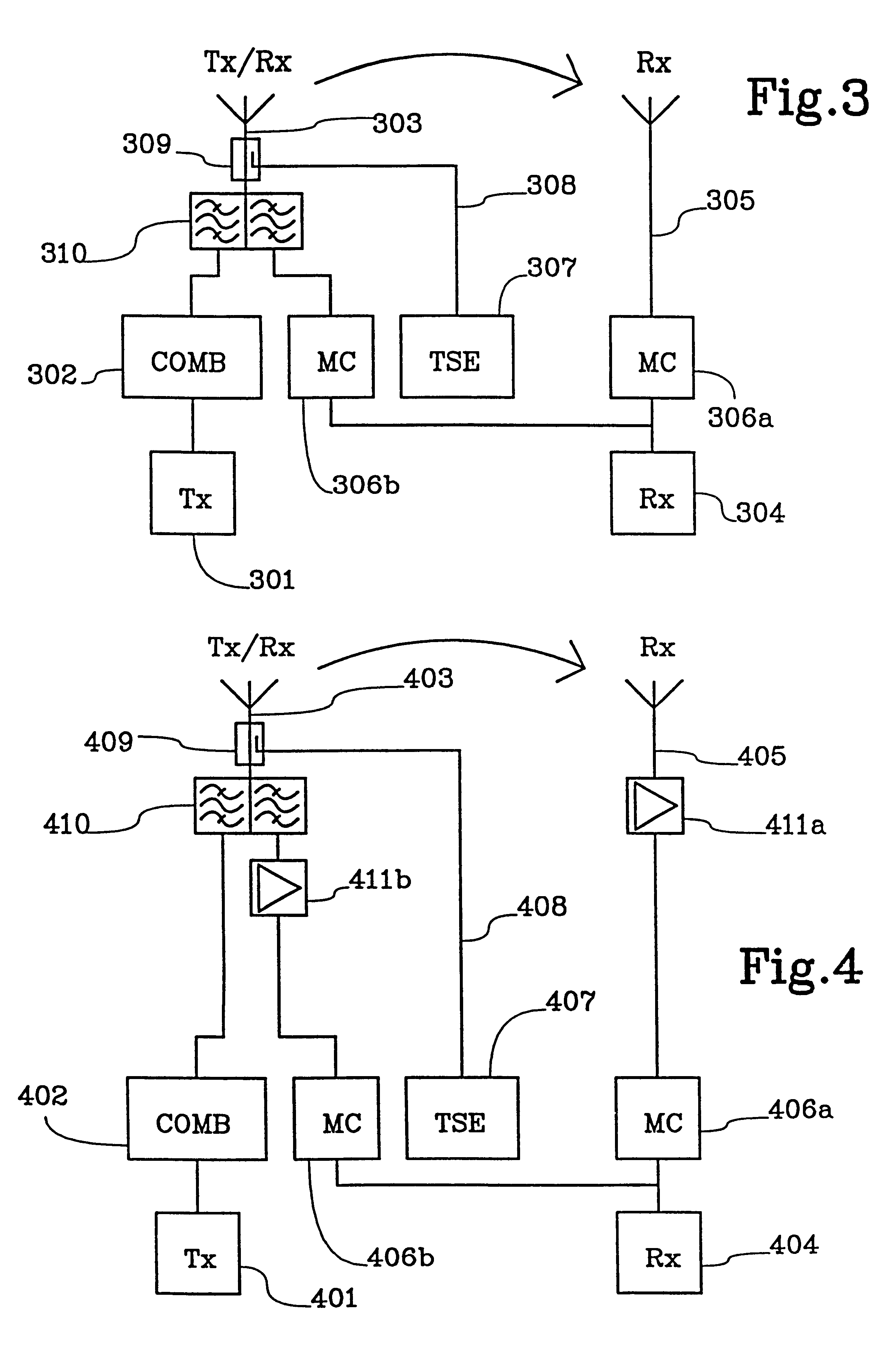Method and an arrangement in a radio system
a radio system and method technology, applied in the direction of transmission monitoring, receiver monitoring, wireless communication, etc., can solve the problems of high cost, cumbersome manual inspection, and damage to different parts of the base station equipment, and achieve the effect of simple but efficien
- Summary
- Abstract
- Description
- Claims
- Application Information
AI Technical Summary
Benefits of technology
Problems solved by technology
Method used
Image
Examples
Embodiment Construction
FIG. 1 illustrates, schematically, a radio base station transceiver according to prior art. The base station transceiver involves a plurality of transmitter units 101. The transmitter units are connected to a combiner 102 which provides separation between the different transmitter units 101 and directs radio frequency signals produced by the transmitter units towards a transmitter antenna 103. The combiner 102 consists of a number of resonant filters.
The base station transceiver furthermore involves a number of receiver units 104. The receiver units are connected to at least one receiver antenna 105 via a multicoupler 106, which amplify incoming signals and couples these signals to different receiver units. The receiver units may be coupled to an auxiliary antenna 107 via an auxiliary multicoupler 108 to provide antenna diversity. More than one auxiliary antenna may be used. It is to be noted that a transmitter unit and a receiver unit may be applied as different portions of a print...
PUM
 Login to View More
Login to View More Abstract
Description
Claims
Application Information
 Login to View More
Login to View More - R&D
- Intellectual Property
- Life Sciences
- Materials
- Tech Scout
- Unparalleled Data Quality
- Higher Quality Content
- 60% Fewer Hallucinations
Browse by: Latest US Patents, China's latest patents, Technical Efficacy Thesaurus, Application Domain, Technology Topic, Popular Technical Reports.
© 2025 PatSnap. All rights reserved.Legal|Privacy policy|Modern Slavery Act Transparency Statement|Sitemap|About US| Contact US: help@patsnap.com



